Hopefully you’ve already read my previous post of malting your own gluten-free grains. The next step is of course the brewing.
I followed a method detailed by Andrew Lavery of O’Brien Brewing in Australia. I won’t even pretend to know what he was talking about half the time; enzymatic strength, raw adjuncts, conversion rest, apparent attenuation, potential oxidation problems, decoction, maximum starch conversion. But he describes his methods in a lot of detail and gives very clear instructions.
I used the brew-in-a-bag technique in order to eliminate the need for purchasing a seperate lautering bucket. I’m sure I could have done a better job at this brew but given the restrictions of needing the kitchen to cook dinner later that day, I did the best I could.
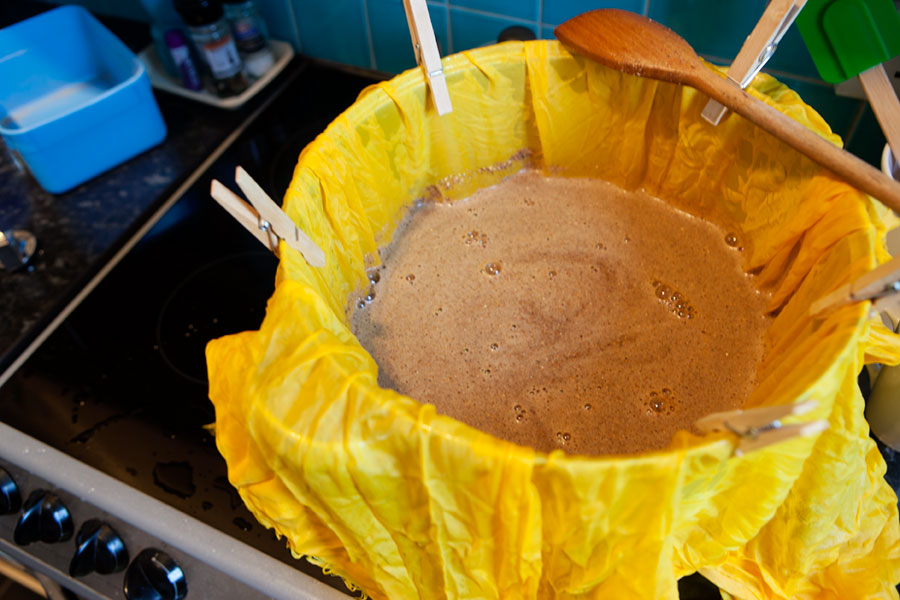
Using a brew bag in the gluten-free wort
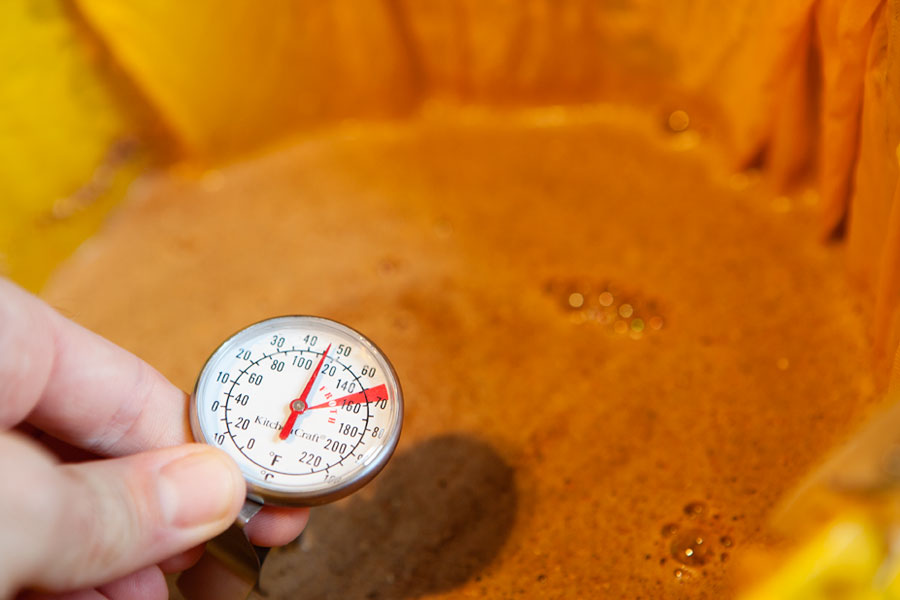
Checking the wort temperature
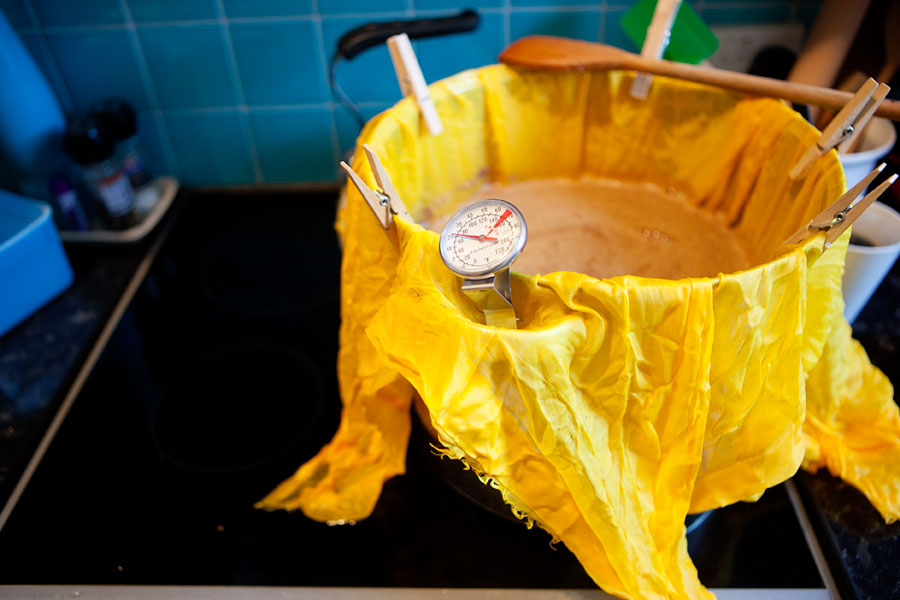
Boiling the wort of the gluten-free homebrew beer
Using our largest pot I heated 7 litres of water to 43°C. I pegged a large cloth to the sides of the pot (much safer not using a gas cooker in this case) and filled it with the ground malted grains. I let this mash rest at 40°C for 10 minutes, stirring it every 10 minutes.
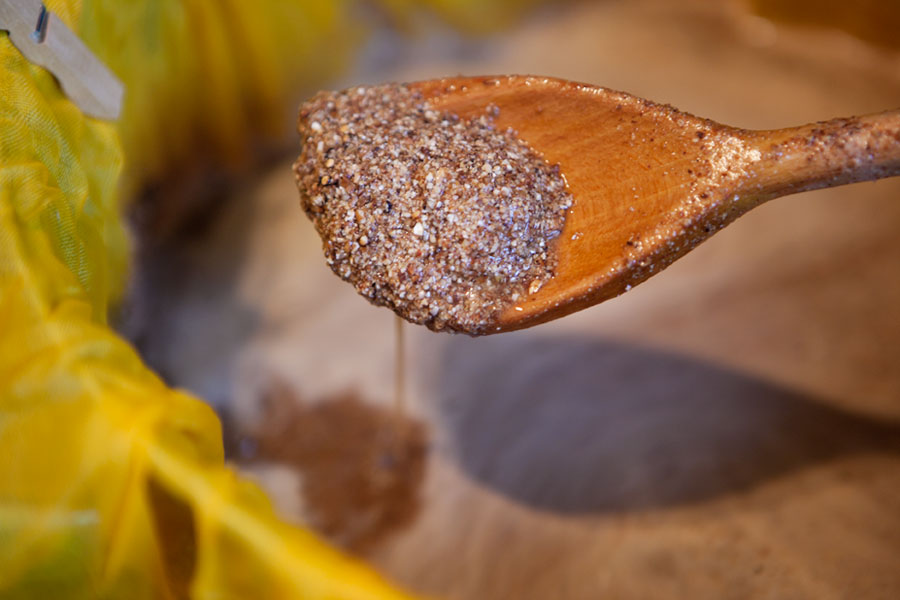
The malted gluten-free grains in the brew bag
I added 3 litres of boiling water and let rest at 55°C for 25 minutes, allowing the malt to settle in the last 15 minutes. I siphoned off 3 litres of the clear liquid into another bowl and let it cool in the fridge. To the mash I added 2 litres of boiling water and heated it up to 70°C for 20 minutes. I then got it boiling for 5 minutes followed by another rest, until the mash dropped to a temperature of 70°C.
I added the liquid from the fridge. At this point it smelt nice but only a little sweetness could be tasted. I carefully removed the bag full of the malted grains and washed as much of the flavour out of it by flushing it with boiling water in to another pot. This liquid got added to the the large pot (the wort) while the malted grains got dumped into our compost heap.

Cooling some of the wort in the fridge

The wort was brought to the boil for a total of 90 minutes. At 60 minutes to go, I added my hops, 12 grams of Northdown and 12 grams of Goldings and my sugars. My sugars consisted of 290 grams of black treacle, 330 grams of rice syrup, 350 grams of golden syrup and 230 grams of pure blackstrap molasses. I added more sugars towards the end as well.
At 20 minutes to go, I added 1 teaspoon of Irish moss. At 10 minutes to go I added a further 12 grams of Northdown and 12 grams of Goldings hops. At the end of the 90 minute boil I topped up the pot with more boiling water to get a total volume of 17 litres. I stirred it for 5 minutes and then left it to settle for 20 minutes. I then placed the entire pot in a sink with ice to cool it down.
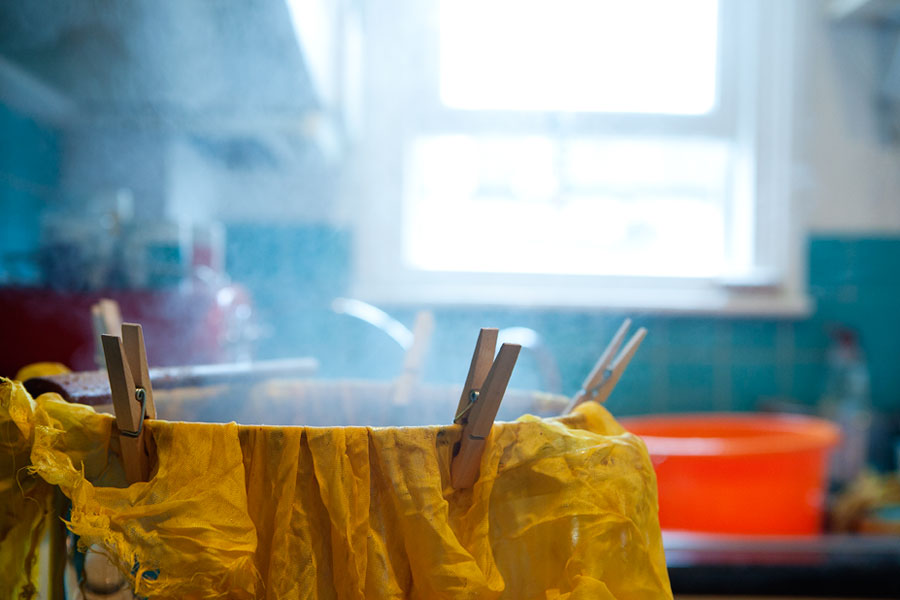
Boiling the wort of the gluten-free beer
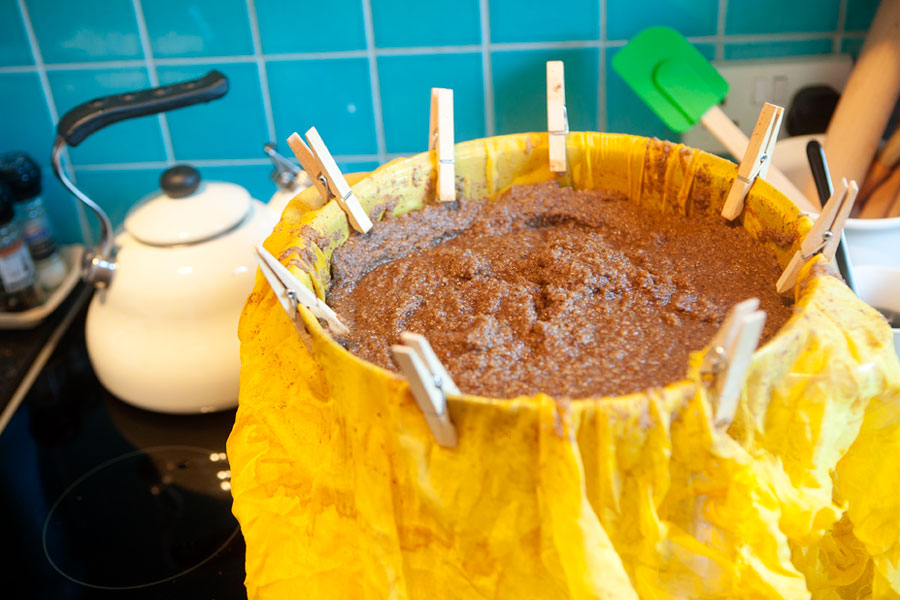

Once cooled to 20°-25°C, I poured the liquid into my fermenting bucket, added yeast and covered. Within the day the fermenter had started bubbling. When it stopped bubbling, 16 days later, I siphoned the liquid out and mixed it with a settling mixture that consisted of 10 grams of gelatine dissolved into 1 pint of warm water. This was then put back into the now clean fermenting bucket and left to settle out for three days.

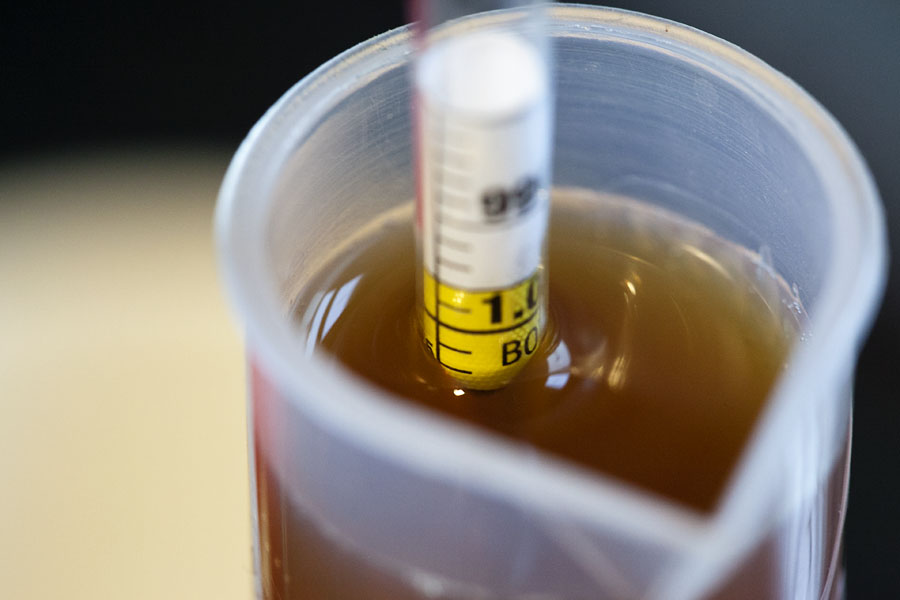
Measuring the specific gravity
To bottle the brewed beer I added a priming sugar mixture that amounted to 1 teaspoon of sugar to every 1/2 litre of beer. I left the bottled gluten-free beer in the garden shed for about a month before drinking. Considering the amount of time and effort I’d put into it I was disappointed with the taste of it. Although it hasn’t put me off using the process, I now realise I need to use a lot more malted grains to begin with. With my current lack of space for things like this I think I will be sticking with the other gluten-free beer brewing recipe I had more success with. See recipe for Damian Keefe’s “Four Star” gluten-free strong ale.

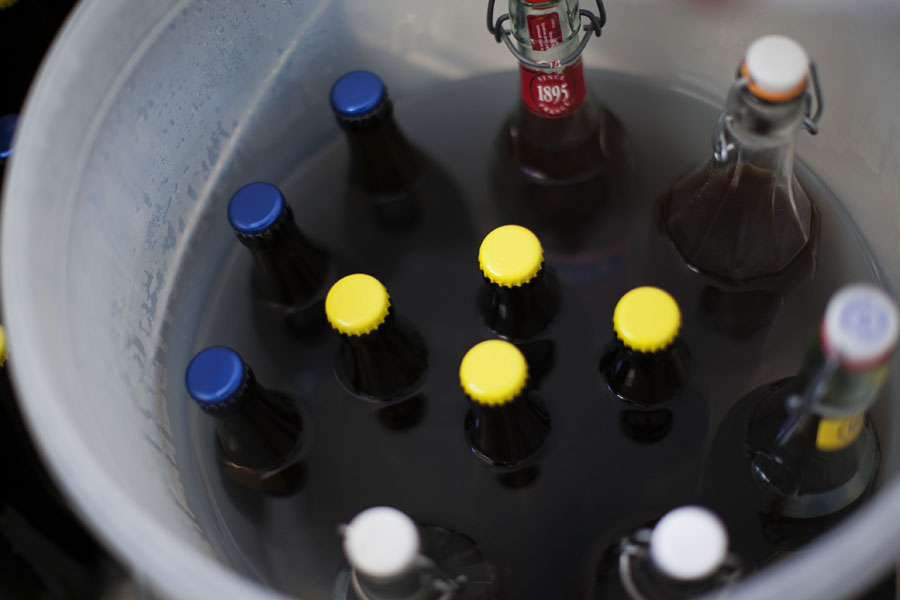
Keeping the beer at 24°C
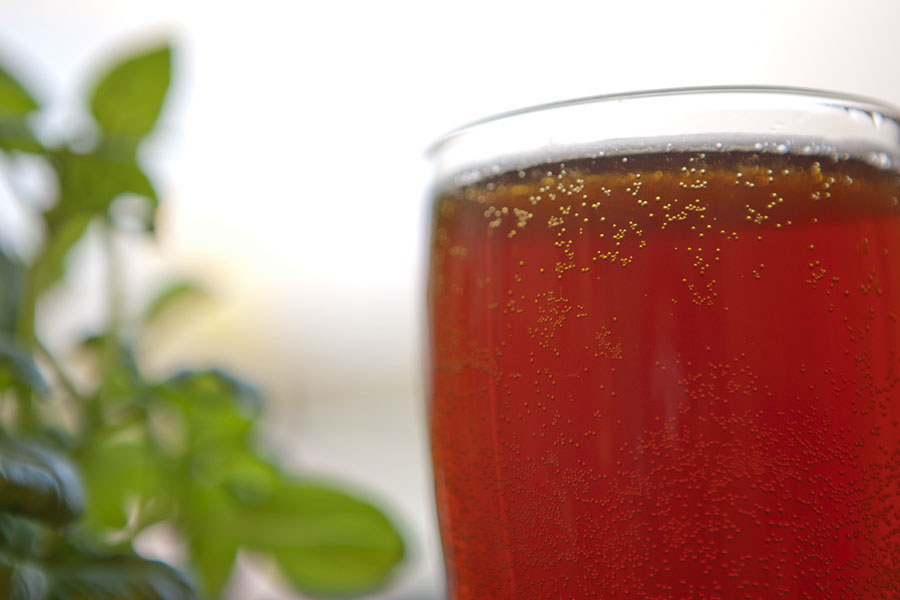
The finished gluten free homebrew beer from malted grains

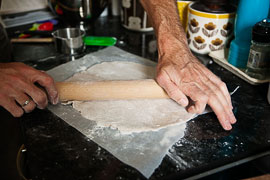
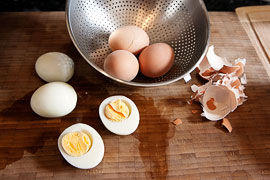
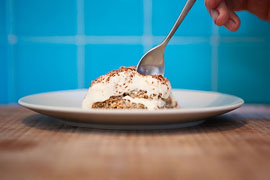
You mention that you followed a method detailed by Andrew Lavery of O’Brien Brewing in Australia. Any chance you can provide the detailed method?
Hi Joe
Andrew Lavery has a good description of his method here:
Cheers
Leon